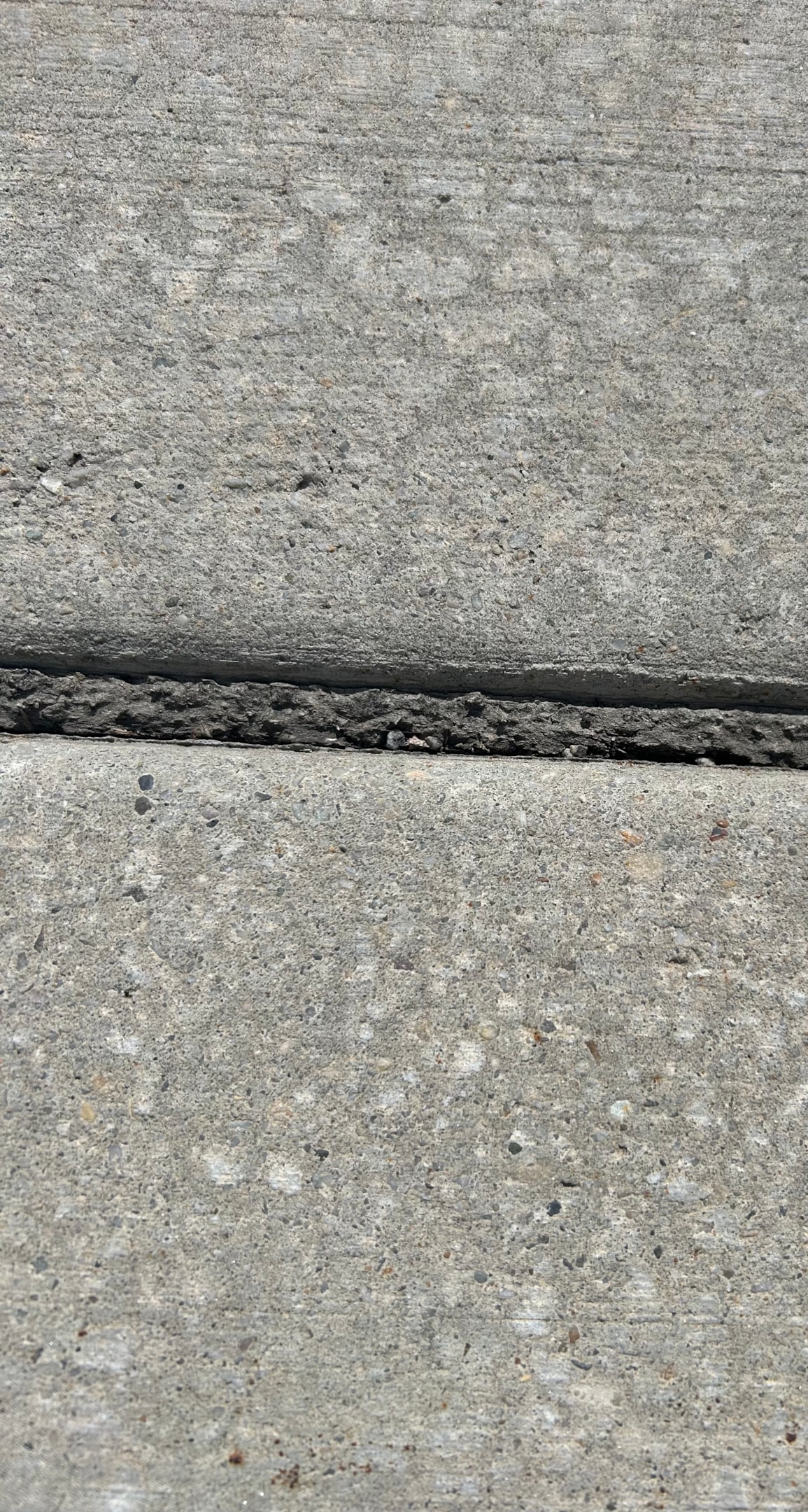
“Don’t step on a crack or else you’ll break your mother’s back.”
When you were a child, you may have recited that poem while walking down sidewalks and avoiding the perfect straight line that was installed within the concrete slabs.
In the concrete industry, we don’t consider them as cracks. They are called “control joints,” and we install them with a purpose in mind. They are there to prevent the types of cracks that you don’t want.
How Do Cracks Form in Concrete Slabs
Before we discuss how control joints in concrete slabs can prevent cracking, it’s important to discuss how unwanted cracks are formed. There are a variety of types, and we actually posted an article that went more in-depth about some of them. Here’s a summary:
- Drying shrinkage – When concrete is first laid out, a lot of it is made out of water. The water at the surface will evaporate, causing it to shrink. However, underneath the surface, the moisture is still there, so it doesn’t do it as fast. This difference in shrinkage produces tension, and that leads to a crack being formed.
- Expansion cracking – This kind of crack forms because of changes in the weather. When it’s warm the concrete slab will expand. When it’s cold, it contracts. This difference causes the concrete to crack.
- Heaving cracks – This kind of crack is caused by an upward swelling from beneath the surface. This could be due to frost, tree roots, soil, or even failure to use a proper drainage system, which would prevent water from creating problems.
- Settling cracks – These are kind of the opposite of heaving cracks. They are formed by the downward movement on part of the concrete due to inadequate support underneath. When the load transfer isn’t evenly distributed, it can cause some problems.
How Control Joints Keep Your Concrete Slab From Cracking
As we discussed in the last section, a crack in your concrete slab can happen for a variety of reasons. This means that even the most expertly-poured concrete is subject to cracking no matter the slab thickness. That’s why you need ways to control cracking.
One of those ways is through a control joint. These are used to prevent cracks that are formed from shrinkage or temperature. The interesting thing it is that it doesn’t actually prevent the crack from forming. In fact, it induces the crack in a way.
When the control joint is formed, it weakens the concrete at that point. This means that when it cracks, it will most likely do so beneath the surface up to that weak point. In a way, it’s like a lightning rod, only it’s underground and it attracts cracking instead of lightning.
How We Make Control Joints in Concrete
There are a couple of ways that we can go about creating control joints in the concrete slabs. One of those is to have a concrete worker use a grooving tool. This is an instrument that usually has a “v” shape that cuts through concrete that hasn’t been dried quite yet.
The other way is to use a power tool called a saw-cut after the concrete has already been dried. These have really strong blades that are able to cut right through concrete.
When we cut our control joints into the concrete, we have to be aware of the joint spacing. The control joints need to be spread out along the concrete at an even spacing according to the slab thickness. If we don’t keep this in mind, cracking is more likely to happen. That would defeat the purpose of installing the joints in the first place.
Difference Between Control Joints and Expansion Joints

Let’s say you’re on an evening stroll around your neighborhood. You look down at the control joints as you walk past them, and something catches your eye. It looks like a control joint, but some kind of dark-colored substance is filled in. It’s like the cream filling of an Oreo, where the slabs themselves are the cookies.
That is actually another kind of construction joint called an expansion joint. It has a similar purpose, but it works a little differently. Instead of being there to control cracking, an expansion joint is about controlling the expansion and contraction of the concrete, especially when it has more slab thickness.
For example, during the cold months, the concrete will shrink, but as the temperature changes into hot weather, the concrete will expand out. Expansion joints will take some of the pressure from that movement like a spring so that the concrete doesn’t cause any damage to any structure or building material around it.
How Expansion Joints Are Installed
Expansion joints are typically installed either between slabs or between the concrete and surrounding walls. These kinds of construction joints are usually installed before the concrete is ever poured.
It’s actually a pretty simple process. We take the material that makes up the expansion joints, whether it be plastic foam, rubber, metal or any other type. The material is usually cut into long sheets that we lay out along the walls of either the older concrete that’s already laid down or the wall around the perimeter of where we’re going to pour (if there is one).
Once we’ve laid it out, we make sure it is positioned correctly, and then we either nail or drill it into the walls. After that, we pour like normal.
The Best Way To Control Cracking
Seeing that little jagged line creep up into your concrete is always unnerving. You spend so much money for your property to look nice, and then that happens. This might make you hesitant to hire another contractor. How do you know they aren’t going to mess it all up again?
The way to ensure that you are getting quality concrete is by hiring a team with a track record for producing quality results.
For over a decade, the team at OKCrete has been doing all kinds of concrete and home improvement projects. We are currently standing at a 4.9 out of 5 star average rating on Google, and we have gained a reputation for our premium quality in the Tulsa and Oklahoma City areas.
Request a quote today, and discover how we can help your property look even better.
